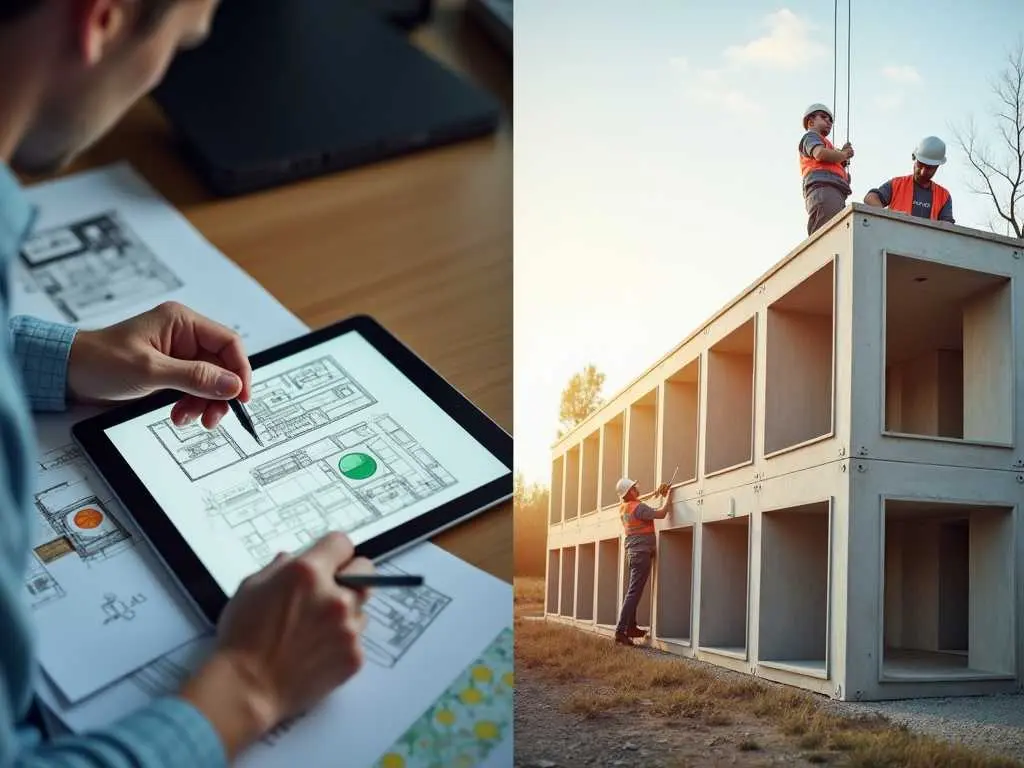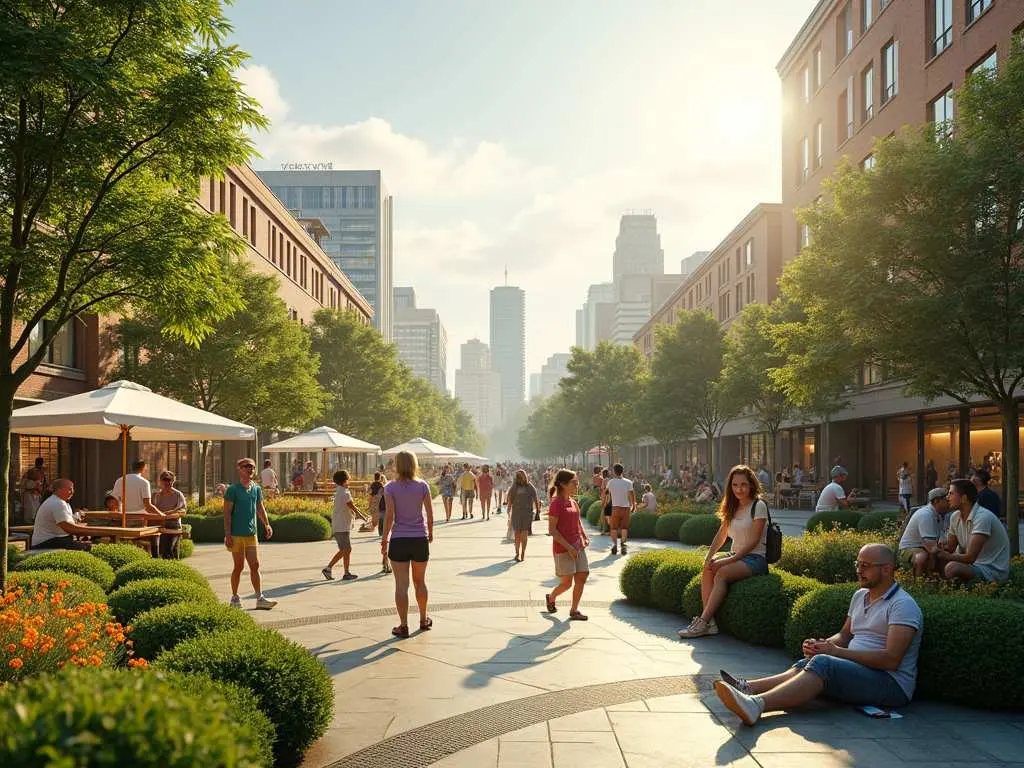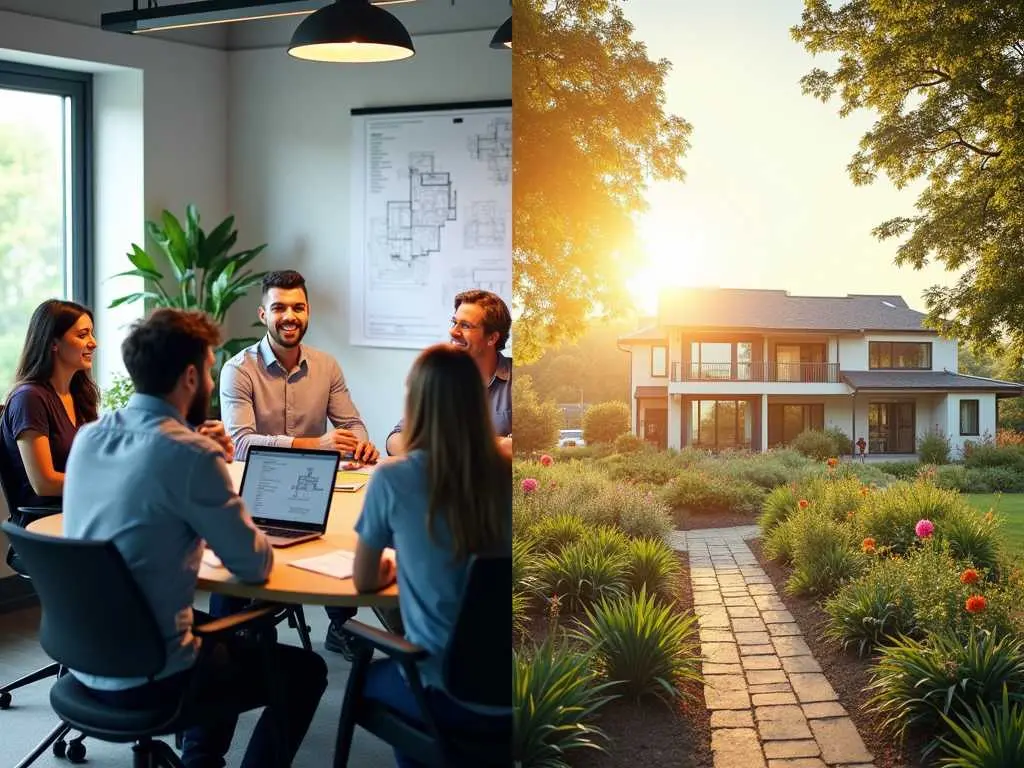With a strong foundation in collaborative design, I’ve seen how diverse influences create truly dynamic spaces. At Curvspace, we integrate input from various stakeholders to shape shared environments that resonate with everyone. This article examines how embracing multiple perspectives elevates spatial design.
Jump to:
The Essence of Shared Design
Shared design, at its core, is a philosophy that recognizes the value of incorporating diverse perspectives into the creation of spaces and systems. It moves away from the traditional, top-down approach where a single designer or a small group dictates the outcome, and instead, it embraces a multi-stakeholder influence to ensure the final product reflects the needs and desires of all who will interact with it. This approach acknowledges that spaces are not just physical structures, but also social environments that should foster inclusivity, collaboration, and a sense of community.
Shared spaces promote collaboration, creativity, and open communication by providing flexible environments where teams can work together seamlessly. These spaces encourage idea-sharing, cross-departmental interactions, and innovation, helping boost productivity and employee engagement.
Benefits of Multi-Stakeholder Influence
1. Enhanced Creativity and Innovation:
Bringing together diverse stakeholders with different ideas, goals, and talents can help you rethink conventional approaches and come up with something new and innovative. Diversity in the workplace encourages creativity and innovation because every team member brings their own unique backgrounds, experiences, and perspectives to the table.
“Creativity is seeing what everyone else has seen, and thinking what no one else has thought,” as Albert Einstein said, highlighting that creativity thrives in the fertile ground of diverse perspectives
2. Increased User Satisfaction:
When the end-users are involved in the design process, the resulting space is more likely to meet their needs and expectations. This leads to higher satisfaction rates and a greater sense of ownership among the people who use the space.
3. Improved Functionality and Efficiency:
Different stakeholders bring unique insights into how a space will be used and maintained. Incorporating their input can lead to designs that are not only aesthetically pleasing but also highly functional and efficient.
4. Stronger Sense of Community:

Shared design fosters a sense of community by creating spaces that reflect the collective identity and values of the people who use them. This can lead to increased social interaction, collaboration, and a stronger sense of belonging.
5. Better Problem-Solving:
Diverse teams consistently outperform homogeneous teams in problem-solving and decision-making. They bring more innovative ideas to the table and are better equipped to navigate complex challenges.
6. Increased Inclusivity:
Incorporating diverse perspectives into your design process can significantly enhance the quality and inclusivity of your work. Embracing diversity in your design thinking helps to avoid unintentional biases and ensures that your work is accessible and appealing to all.
7. Greater Sustainability:
By considering the environmental and social impacts of a design from multiple angles, shared design can lead to more sustainable outcomes. This includes using eco-friendly materials, reducing energy consumption, and creating spaces that are resilient to changing conditions.
Challenges in Implementing Shared Design
1. Conflicting Interests:
Different stakeholders may have conflicting needs and priorities, making it challenging to reach a consensus. It’s essential to establish clear, shared goals and expectations for the collaboration, including what collaborators will collectively pursue and achieve.
2. Communication Barriers:
Effective communication is crucial in shared design, but differences in language, culture, and technical expertise can create barriers. Creating safe spaces for interaction is crucial, as it allows for honest and meaningful discussions and builds relationships.
3. Power Imbalances:
Some stakeholders may have more influence than others, leading to unequal participation and outcomes. Selecting participants at approximately the same level of authority and keeping a gender balance ensures fair representation.
4. Time and Resource Constraints:
Shared design can be a time-consuming and resource-intensive process, requiring significant investment in communication, facilitation, and decision-making. It is important to allocate sufficient time between each stage to progress the goals, undertake agreed actions, and carry out more targeted engagement to tackle discrete issues.
5. Resistance to Change:
Traditional design processes often prioritize efficiency and control, making it difficult to embrace the more open and collaborative approach of shared design. Building support for co-creative practices in traditional settings involves demonstrating value through success stories, case studies, and pilot projects to illustrate the benefits.
6. Difficulty in Measuring Success:
The success of shared design is not always easy to quantify, as it involves subjective factors such as user satisfaction, community engagement, and social impact.
7. Maintaining Focus:
Ensuring constructive dialogues amidst varying viewpoints requires effective facilitation and clear ground rules to maintain focus on common goals. It is also important to balance creativity with practicality, employing prototyping and user testing to explore viability.
Strategies for Successful Multi-Stakeholder Collaboration
Establish Clear Goals and Expectations:
Define the purpose, scope, and desired outcomes of the shared design process. Ensure that all stakeholders understand their roles and responsibilities, and how their contributions will be valued.
Create Inclusive Communication Channels:
Establish multiple channels for communication, including meetings, workshops, online forums, and surveys. Use clear and accessible language, and provide translation services when necessary.
Facilitate Meaningful Dialogue:
Use skilled facilitators to guide discussions, manage conflicts, and ensure that all voices are heard. Encourage active listening, empathy, and a willingness to compromise.
Promote Equal Participation:
Implement strategies to address power imbalances and ensure that all stakeholders have an equal opportunity to contribute. This may involve providing training, mentoring, or other forms of support.
Embrace Iterative Design:

Use an iterative design process that allows for continuous feedback, experimentation, and refinement. Encourage stakeholders to share their ideas and suggestions at every stage of the process, and be prepared to adapt the design based on their input.
Celebrate Successes:
Recognize and celebrate the achievements of the shared design process, both large and small. This helps to build momentum, foster a sense of community, and reinforce the value of collaboration.
Acknowledge Intersectionality:
Recognizing the complexity of individuals’ identities and experiences plays a crucial role in understanding diversity and inclusion. By acknowledging the interplay of various aspects of identity, organizations can cultivate a more comprehensive approach to fostering inclusivity and equity among employees.
To make shared spaces truly reflective of their users, it’s crucial to move beyond traditional design constraints and embrace innovative approaches. Consider the principles of dynamic architecture, where elements of a building can change over time to better suit the needs of its occupants.
Examples of Dynamic Architecture and Shared Spaces
- Sharifi-Ha House in Tehran: Designed by Next Office, this house features rotating volumes that can be adjusted to create different spatial configurations based on the season or the occupants’ needs. This dynamic approach allows for a flexible and adaptable living environment that responds to changing conditions.
- Kiefer Technic Showroom in Austria: This building has a facade of 112 movable tiles that adjust to control the amount of daylight entering the building. This dynamic facade reduces the need for cooling and creates a constantly changing aesthetic.
- Sliding House in Suffolk, England: Designed by dRMM, this house includes a 28-meter-long sliding section that can be moved to create different living zones and adjust views. This dynamic element transforms the relationship between the house and its surroundings.
- Town of Poynton, UK: Poynton’s innovative Shared Space Scheme was completed in 2012. This award-winning regeneration scheme removed traffic lights and changed the lay out for what was one of the busiest junctions in Cheshire.
- Dutch town of Drachten: It started with a major intersection converted into a shared space, yanking out the traffic lights, road markings, and a bunch of signs. The town tracked a significant drop in crashes after the changes were made, and the area has become a popular destination, rather than a place to just zip through in a car.
The Psychology of Shared Spaces
The psychology of shared space is grounded in the idea that humans have an innate ability to navigate and adapt to their environment, and that clear and consistent design cues can help guide behavior. Minimizing the number of signs and signals in shared spaces can help create a more cohesive and visually appealing space. This approach encourages people to behave more responsibly and attentively because they’re forced to rely on their own senses and judgment to navigate the space.
People Also Ask
How do you ensure all stakeholders have a voice in the design process?
Creating inclusive communication channels, facilitating meaningful dialogue, and promoting equal participation are key strategies. This may involve providing training, mentoring, or other forms of support to ensure that all stakeholders have an equal opportunity to contribute.
What role does technology play in shared design?
Digital platforms and tools can facilitate easy collaboration and idea sharing, especially in remote or hybrid working environments. These tools can support communication, feedback, and decision-making, and can help to overcome geographical barriers.
How do you balance creativity with practical considerations in shared design?
Maintaining focus on project goals, ensuring constructive dialogues amidst varying viewpoints, and balancing creativity with practicality are essential. Employ prototyping and user testing to explore the viability of ideas and ensure they align with user needs.
Conclusion

Embracing diverse influences in shared design is not just a trend, but a fundamental shift towards creating spaces that are more inclusive, functional, and responsive to the needs of their users. By incorporating the perspectives of all stakeholders, we can create environments that foster creativity, collaboration, and a stronger sense of community.
Ready to transform your space with the power of shared design? Contact Curvspace today to start a conversation about your next project.
References
- Grady, J. S., Her, M., Moreno, G., Perez, C., & Yelinek, J. (2019). Recognizing intersectionality: A guide for researchers. American Psychological Association.
- Oermann, M. H. (2024). Writing for publication in nursing (Fifth edition.). Springer Publishing Company, LLC.
Disclosure
Our content is reader-supported. This means if you click on some of our links, then we may earn a commission. Commissions do not affect our editor’s opinions or evaluations. Learn more about our editorial process.

About the Editorial Staff
The Curvspace editorial team comprises a diverse group of experts on intermediate and threshold spaces in homes and workplaces. Architects and interior designers, civil engineers and artists, environmental and behavioral psychologists, sociologists and anthropologists. All collaborate to create helpful content, that explores the full potential of these often-overlooked areas to enhance our daily lives.


